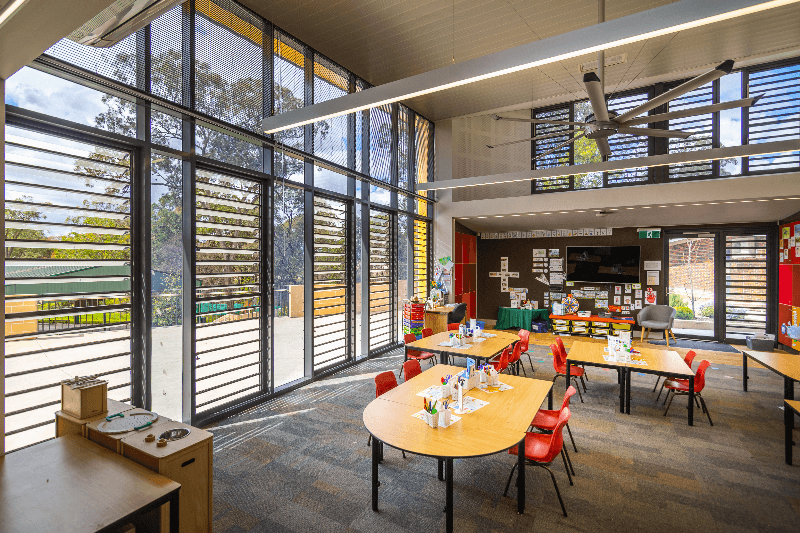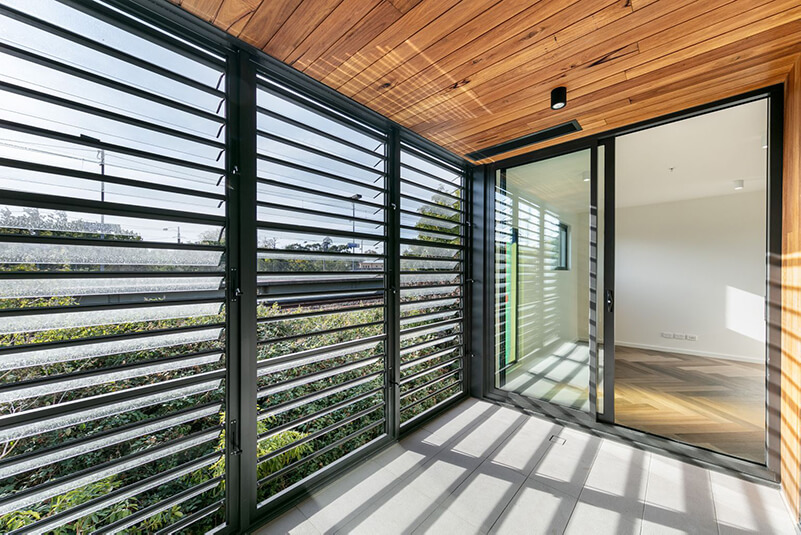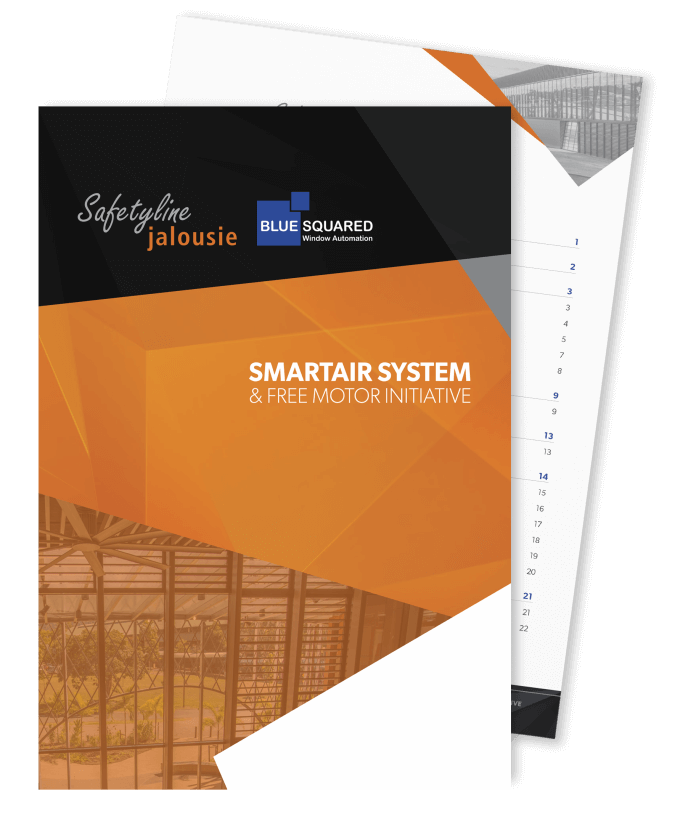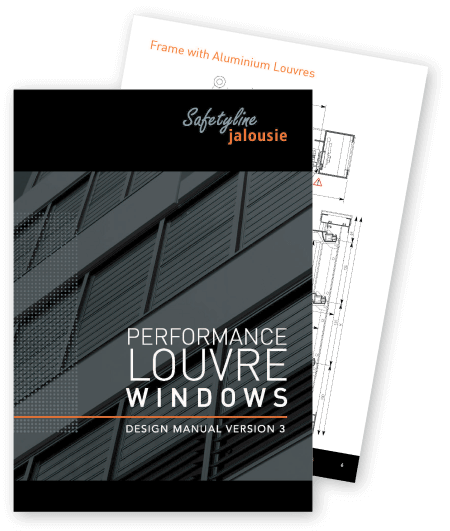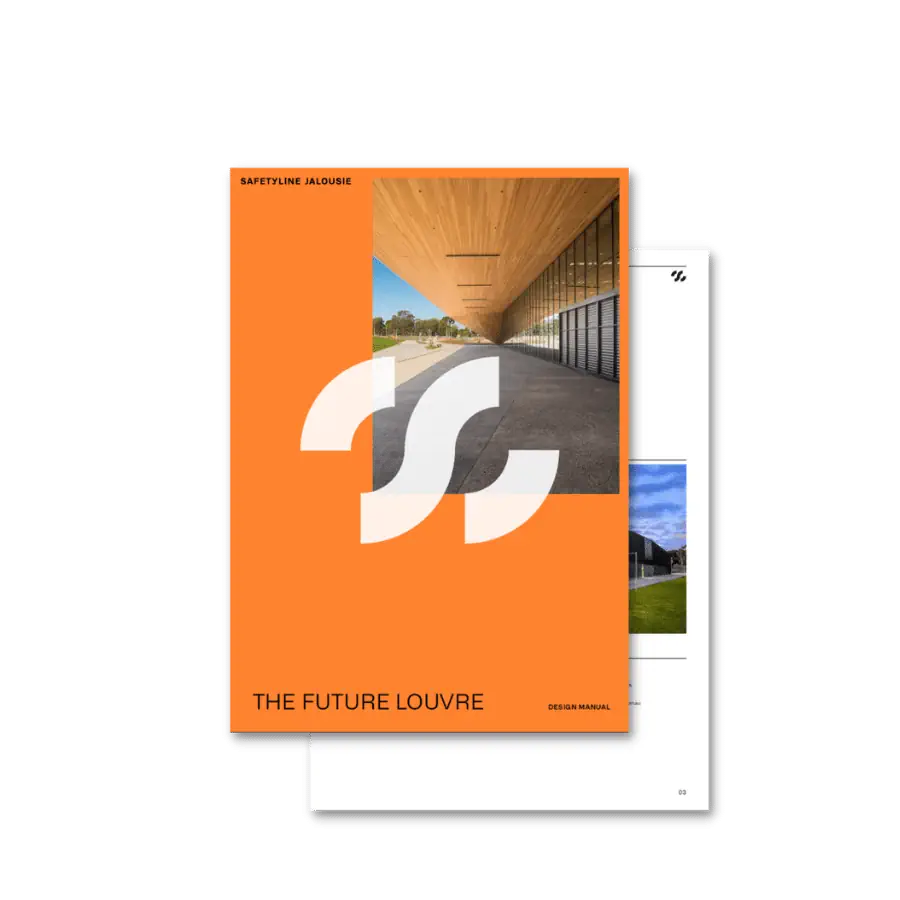Safetyline Jalousie explains why architects and builders should specify high free air windows with low air infiltration to ensure energy efficiency in commercial built environments.
Australia is famous for its diverse weather conditions and climate zones, which make balancing occupants’ thermal comfort and staying energy efficient in indoor spaces throughout the year a challenge for both builders and architects. Free air flow and passive ventilation through window specification and placement have widely been acknowledged as important factors to achieve such goals.
When it comes to natural ventilation, louvre windows provide up to 86% free air flow. The result is four to eight times higher than that of awning or sliding windows, as indicated in the graph below.
However, free air flow is just half of the story when choosing energy-efficient windows. Following the application of the NCC 2019, stronger focus and recognition is now placed on another comparatively vital element – air infiltration.
What is Air Infiltration?
Air infiltration (or air leakage) is the exchange of air through cracks and gaps in the outside shell of a building. Infiltration increases heating and cooling costs, devastates the building envelope and adversely affects occupants’ thermal comfort. Regarding window placement, air leakage likely occurs through cracks between window assembly components as well as window-wall joints.
Air infiltration, however, should not be mistaken as a problem of ventilation. According to Elron Burrell, functioning ventilation allows airflow where it is designed to do so and helps circulate plentiful fresh clean air at a comfortable temperature for people inside a building. In case of air infiltration, air movement is not controlled, less reliable and wasting energy, especially when heating and cooling systems are operational.
So how do architects and builders tackle the issues of air infiltration while allowing an abundance of natural, free airflow? The answer lies partly on specifying energy-efficient windows which have tight sealing, strong weather-stripping, high free air and low air infiltration. That is where Safetyline Jalousie high-performance louvre windows can help!
The Benefits of Specifying Safetyline Jalousie High-Performance Louvre Windows
Safetyline Jalousie louvre windows offer architects and builders with added value and unrivalled performance in terms of strength, flexibility, reliability, versatility and energy efficiency. When fully open, louvres allow up to 86% free air flow – more than any other window types on the market.
Safetyline Jalousie louvres are sealed on all four sides with Marine Grade EPDM seals on each horizontal transom and gaskets on the upright sections. The superior sealing capability ensures air infiltration of only 0.12 L/m2.s – this is 12 times lower (and better) than a conventional glass on glass louvre window.
High free air and low air infiltration are key features for Safetyline Jalousie louvres to offer:
- Protection to the building envelope
For commercial buildings and places with high traffic (e.g. learning spaces, sporting centres, high-rise buildings), the moisture and humidity born out of daily activities can “sneak” into cracks, gaps and cause damage over time to the building envelope. Safetyline Jalousie louvres’ unique sealing feature contribute to the continuity of the overall air barrier and help protect the building envelope from unintended leakage.
Did you know?
A gap only 1mm wide will allow enough unintended airflow to carry 360g of water per day into the building envelope, according to Passipedia.
- Higher energy efficiency and cost-saving
Airtightness supported by louvres prevent uncontrolled heat movement in and out of the building, hence limit usage and reliance on the HVAC systems. When combined with the innovative SmartAir system, louvres automatically monitor internal and external ambient temperatures, incorporate morning and night purging to cool the building fabric during unoccupied periods and ultimately reduce air conditioning energy cost.
- Thermal comfort and wellbeing of occupants
Louvre windows deliver ultimate control over air flow to indoor spaces, allowing cool breezes in during the warmer months, and keeping cold air out in winter. By preventing air infiltration, louvres also protect occupants from airborne pollutants, allergens, microbes and fluctuating humidity levels. This is of paramount importance in school design, aged care facilities and apartment complexes.
Louvre Performance Analysis via Inhabit Group Modelling
To further prove these performance ratings and the importance of choosing high free air, low air infiltration windows, Safetyline Jalousie has reached out to Inhabit Group for modelling and scenario testing of learning spaces.
Table 1: Façade Airtightness Data modelled by Inhabit Group
| Louvre Type | Airtightness, L/m2.s @75 Pa as per AS 2047 | Calculated (scenario GBJ) m3/m2.h @ 50 Pa | Resultant whole-of-façade airtightness, m3/m2.h @ 50 Pa | Relative benefits of Jalousie louvres |
|---|---|---|---|---|
| Jalousie louvre | 0.12 | 0.10 | 8.55 | |
| Generic louvre A | 1.5 | 1.23 | 9.16 | 7% |
| Generic louvre B | 1.9 | 1.55 | 9.34 | 8% |
| Generic louvre C | 5 | 4.08 | 10.7 | 20% |
| All other façade elements (as per NCC 2019) | 3.4 | 2.78 | 10 |
It is proven that Safetyline Jalousie louvres have a much higher airtightness figure than the generic louvres tested or indeed the requirements of NCC 2019. As a result, the façade airtightness of the tested building is increased by up to 20%. Less air changes per hour also allow for a much tighter control over indoor air quality.
It is worth noting that the airtightness benefit of Safetyline Jalousie louvres increases as the percentage façade area increases.
In addition, Inhabit Group’s modelling indicates that Safetyline Jalousie louvre windows can improve thermal comfort levels for occupants, decrease energy usage and costs and ultimately reduce greenhouse gas emissions for the operating life of the project.
The Final Word
As part of the National Energy Productivity Plan (NEPP), the Australian Government has also made changes to energy efficiency-related provisions to reduce emissions by 26-28% on 2005 levels by 2030. However, in 2019 The United Nations (UN) reported that Australia was not on track to meet them. It is more important now than ever for the built industry to prioritise energy-saving, environmental-friendly materials for greener, healthier living environments.
By choosing energy-efficient windows with high free air and low air infiltration like Safetyline Jalousie louvres, architects and builders can witness a huge leap in the project outcomes while contributing to the national achievements of sustainability.
Should you need further consultation and technical advice on smarter, greener ventilation solutions, do not hesitate to contact Safetyline Jalousie team.

